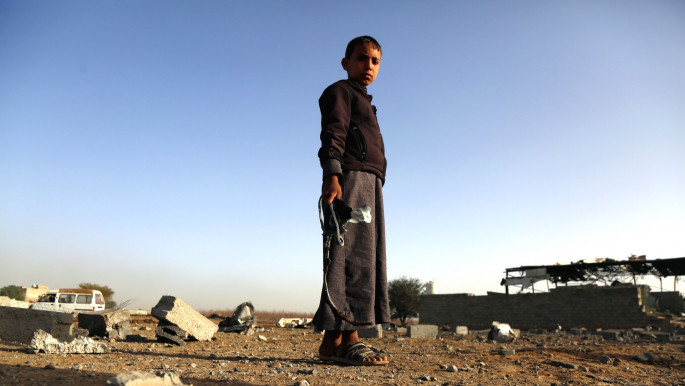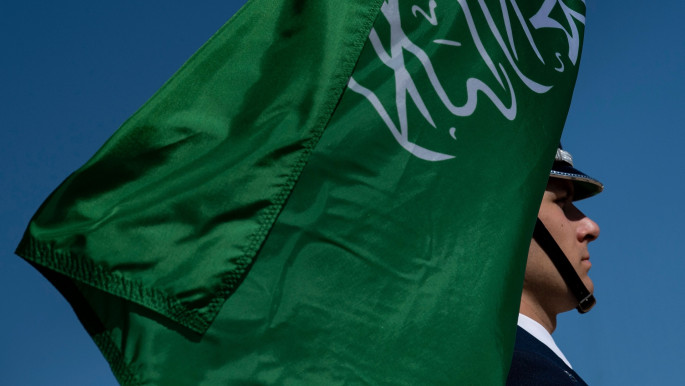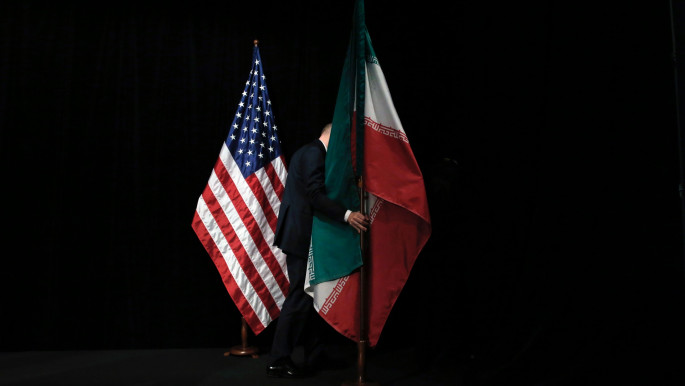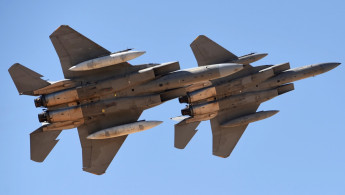Will Biden really curb arms sales to Saudi Arabia?
The Carter administration, incidentally, tried a similar approach with the first US sale of top-of-the-line warplanes to the Saudi kingdom, only to reverse course when circumstances changed.
Reuters reported that Biden will make a decision about whether or not to cancel arms deals to Saudi Arabia that might pose human rights concerns as well as restricting future arms sales to "defensive" weapons.
"Our focus is on ending the conflict in Yemen even as we ensure Saudi Arabia has everything it needs to defend its territory and its people," said a State Department spokesperson when enunciating the administration's proposed policy.
The new administration is much more critical of Riyadh than its predecessor, which pushed for essentially selling the kingdom whatever it wanted.
One way Biden might try to pressure Riyadh over the Yemen conflict is withholding any sale of additional jet fighter-bombers and accompanying munitions while authorising the sale of additional Patriot air defence missile systems to help defend the Saudi kingdom against Houthi ballistic missile and drone strikes, which have become increasingly more deadly.
 |
The Biden administration is much more critical of Riyadh than its predecessor, which pushed for essentially selling the kingdom whatever it wanted |  |
Additionally, it could continue selling other non-lethal military supplies such as body armour, Humvees, Mine-Resistant Ambush-Protected (MRAP) vehicles and that sort of thing – although even the latter two are invariably armed and can be used in offensive operations.
Other than that, distinguishing between what technically amounts to a wholly defensive weapon and one capable of offensive actions certainly isn't all that clear cut.
 |
|
| Read more: Can European arms companies be held liable for war crimes in Yemen? |
In 1978, the Carter administration sought to reassure a sceptical Congress over an enormous and unprecedented arms package, consisting of 60 advanced F-15 Eagle jet fighters, it sought to sell Riyadh. Congress feared the sale of such advanced warplanes to an Arab country, the first US arms deal of its kind, could threaten Israel in the event of another Arab-Israeli conflict.
The Carter administration sought to assuage these concerns through a series of guarantees. It stressed that the F-15s would have almost no offensive capabilities and would only be capable of defending Saudi airspace. This was because the Saudi F-15s would not be equipped with external fuel tanks, which could extend their range almost twofold, or bomb racks, that would give them a ground strike capability.
The administration also pointed out that the Saudis were heavily reliant on US technicians in the kingdom to maintain and operate these sophisticated aircraft as well as the supply of spare parts to keep them airworthy.
Congress still wasn't satisfied, insisting that the Saudi versions of the jets should also have a downgraded radar system that would deny the kingdom the ability to monitor aerial activity from beyond its airspace using the F-15's inbuilt state-of-the-art radar.
 |
How will the Biden administration define what counts as a wholly defensive weapon? |  |
On 9 May, 1978, in a letter from Secretary of Defence Harold Brown to the Senate Foreign Relations Committee, the administration also stressed that Riyadh had given assurances it would not use the jets for offensive missions nor base them at the kingdom's eastern Tabouk airfield, which was a mere 250 miles from Israel.
However, 1979 would prove to be an extraordinarily tumultuous year. The Shah of Iran, America's key ally in the Gulf region, was toppled and replaced by the hostile Ayatollah Ruhollah Khomeini, and the Iranian hostage crisis ensued. Then, in December, the Soviet Union invaded Afghanistan. Washington's calculations quickly changed.
In his 23 January, 1980, State of the Union Address Carter proclaimed his eponymous doctrine, which declared that the US reserved the right to use military force to protect its interests in the Gulf, a direct reaction to that Soviet aggression. Under this context, the administration reconsidered its pledges.
In June 1980, State Department spokesperson Tom Reston said that the administration was considering selling the Saudis the external fuel tanks and bomb racks. In other words, a clear-cut departure from earlier promises that the jets would only come configured for a largely defensive air-to-air combat role.
 |
|
| Read more: Reset or rupture: What lies in store for US-Saudi ties? |
The Saudis, pointing out that they were in many ways a frontline state in defending US interests in the Gulf, insisted they should also be allowed buy E-3 Airborne Warning and Control Systems (AWACS) planes, that would enable them to detect faraway aircraft and coordinate large-scale attacks, along with dedicated aerial tankers.
Riyadh also felt insulted by the idea of getting a downgraded, inferior, or "crippled" version of the F-15. In July 1980, the Saudi ambassador to Washington even threatened to pull out of the deal altogether if this was the case.
One reason the Carter administration strongly pushed Congress for the sale of F-15s in the first place was because the Saudis, in May 1978, were entering negotiations with the French government for Mirage F-1 fighter-bombers. Had a major deal for a fleet of Mirages gone through, which the administration feared, the Saudis might have become an arms client of France instead of the United States.
In much more recent years, opponents of any US arms embargo on Riyadh over its conduct in Yemen have similarly argued that the Saudis might simply shop elsewhere for weapons systems.
 |
Biden may decide against only providing Saudi Arabia with defensive arms, especially if his administration begins renegotiating the Iran nuclear deal and wants to enlist Riyadh's full support |  |
In Reagan's first year in office, his administration pushed for congressional approval to equip the Saudi F-15s with longer-range air-to-air missiles and external fuel tanks but not bomb racks, which it is worth remembering weren't used by US Air Force F-15s in those days. 'Not a pound for air-to-ground,' was a phrase at the time that underscored how the original F-15s were intended to serve primarily, if not purely, as air superiority fighters.
As with the Carter administration in its last year, the administration believed supplying the Saudis with that extra equipment was necessitated by the Shah's fall and the Soviet invasion of Afghanistan.
The Chairman of the Senate Armed Services Committee, John Tower, also argued at this time that Israel would be better off if Riyadh were supplied with what he called carefully upgraded US F-15s rather than the alternative, fully armed French Mirages. Indeed, as its sale of a fleet of Exocet-armed Mirages to Saddam Hussein's Iraq, which were used to attack merchant shipping, demonstrated, France was much less scrupulous about the types of weapons it sold and how they were used.
 |
|
| Read more: Could Biden bring the US back into the Iran nuclear deal? |
Saudi Arabia not only got advanced and fully outfitted F-15s throughout the 1980s. In a move that angered Israel, the Reagan administration even went ahead and sold Riyadh E-3 Sentry AWACs planes. Those planes potentially gave the kingdom the ability to detect whenever an aircraft took off in Israel and, consequently, might have limited that country's ability to launch any mass surprise air assault of the kind that helped it win the 1967 war against Egypt and Syria.
Today, Saudi Arabia operates a large fleet of lethal F-15SA (Saudi Advanced) Strike Eagles, a variant custom-built for the kingdom, capable of carrying various bombs, large eternal fuel tanks, and up to 12 long-range AIM-120 AMRAAM air-to-air missiles. These jets have impressive long-range strike capabilities and are certainly a far cry from the kind of Eagles the Carter administration sold it all those years ago.
That turn of events could prove to be an informative precedent in the future. Freezes and reviews of arms sales are not uncommon when a new administration enters office. Consequently, in time, Biden may decide against only providing the Saudis with defensive arms, especially if his administration begins renegotiating the nuclear deal with Iran and wants to enlist Riyadh's full support.
Paul Iddon is a freelance journalist based in Erbil, Iraqi Kurdistan, who writes about Middle East affairs.
Follow him on Twitter: @pauliddon



